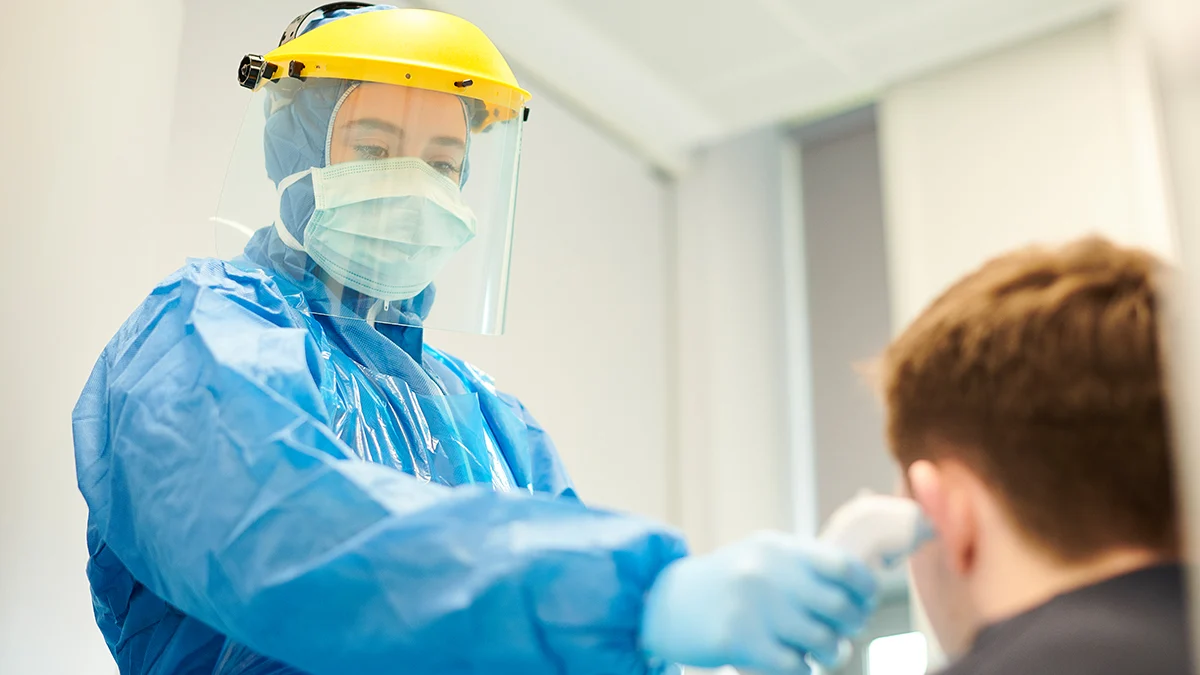What is a coronavirus?
Coronaviruses are a large family of viruses which may cause illness in animals or humans. In humans, several coronaviruses are known to cause respiratory infections ranging from the common cold to more severe diseases such as Middle East Respiratory Syndrome (MERS) and Severe Acute Respiratory Syndrome (SARS). The most recently discovered coronavirus causes coronavirus disease COVID-19.
What is COVID-19?
COVID-19 is the infectious disease caused by the most recently discovered coronavirus. This new virus and disease were unknown before the outbreak began in Wuhan, China, in December 2019.
What are the symptoms of COVID-19?
The most common symptoms of COVID-19 are fever, tiredness, and dry cough. Some patients may have aches and pains, nasal congestion, runny nose, sore throat or diarrhea. These symptoms are usually mild and begin gradually.
Some people become infected but don’t develop any symptoms and don't feel unwell. Most people (about 80%) recover from the disease without needing special treatment. Around 1 out of every 6 people who gets COVID-19 becomes seriously ill and develops difficulty breathing. Older people, and those with underlying medical problems like high blood pressure, heart problems or diabetes, are more likely to develop serious illness. People with fever, cough and difficulty breathing should seek medical attention.
Loss of smell and taste have been reported as two symptoms that may appear, and a patient with them, is 10 times more likely to have COVID-19 infection than other causes of infection. Researchers at UC San Diego Health report the first empirical findings that strongly associate sensory loss with COVID-19, in a study recently published in the journal International Forum of Allergy & Rhinology (1).
How does COVID-19 spread?
People can catch COVID-19 from others who have the virus. The disease can spread from person to person through small droplets from the nose or mouth which are spread when a person with COVID-19 coughs or exhales. These droplets land on objects and surfaces around the person. Other people then catch COVID-19 by touching these objects or surfaces, then touching their eyes, nose or mouth. People can also catch COVID-19 if they breathe in droplets from a person with COVID-19 who coughs out or exhales droplets.
Therefore, it is important to keep the physical distance. Although WHO recommends at least 1 metre (3 feet) distance between people who is coughing or sneezing, Governments are establishing their own measures in terms of distance. Some recent studies are pointing to bigger distances while walking or exercising outside. In the absence of wind, for walking fast at 4 km/h this distance could be about 5 m and for running at 14.4 km/h about 10 m 2.
WHO is assessing ongoing research on the ways COVID-19 is spread and will continue to share updated findings.
References:
- Association of chemosensory dysfunction and Covid-19 in patients presenting with influenza-like symptoms. Carol H. Yan, Farhoud Faraji, Divya P. Prajapati, Christine E. Boone, Adam S DeConde. International Forum of Allergy & Rhinology, 2020; DOI: 10.1002/alr.22579. Accessed on 28th April 2020.
- Towards aerodynamically equivalent COVID19 1.5 m social distancing for walking and running. B. Blocken , F. Malizia , T. van Druenen, T. Marchal. http://www.urbanphysics.net/Social%20Distancing%20v20_White_Paper.pdf. Accessed on 28th April 2020.
- Q&A on coronaviruses (COVID-19). WHO https://www.who.int/news-room/q-a-detail/q-a-coronaviruses. Accessed on 27th April 2020.
- Situation Summary. CDC (Centers for Disease Control and Prevention). https://www.cdc.gov/coronavirus/2019-ncov/cases-updates/summary.html. Accessed on 27th April 2020.
Press contact:
For media inquiries please contact
Ortho Media Relations
Ortho Clinical Diagnostics
media@quidelortho.com

